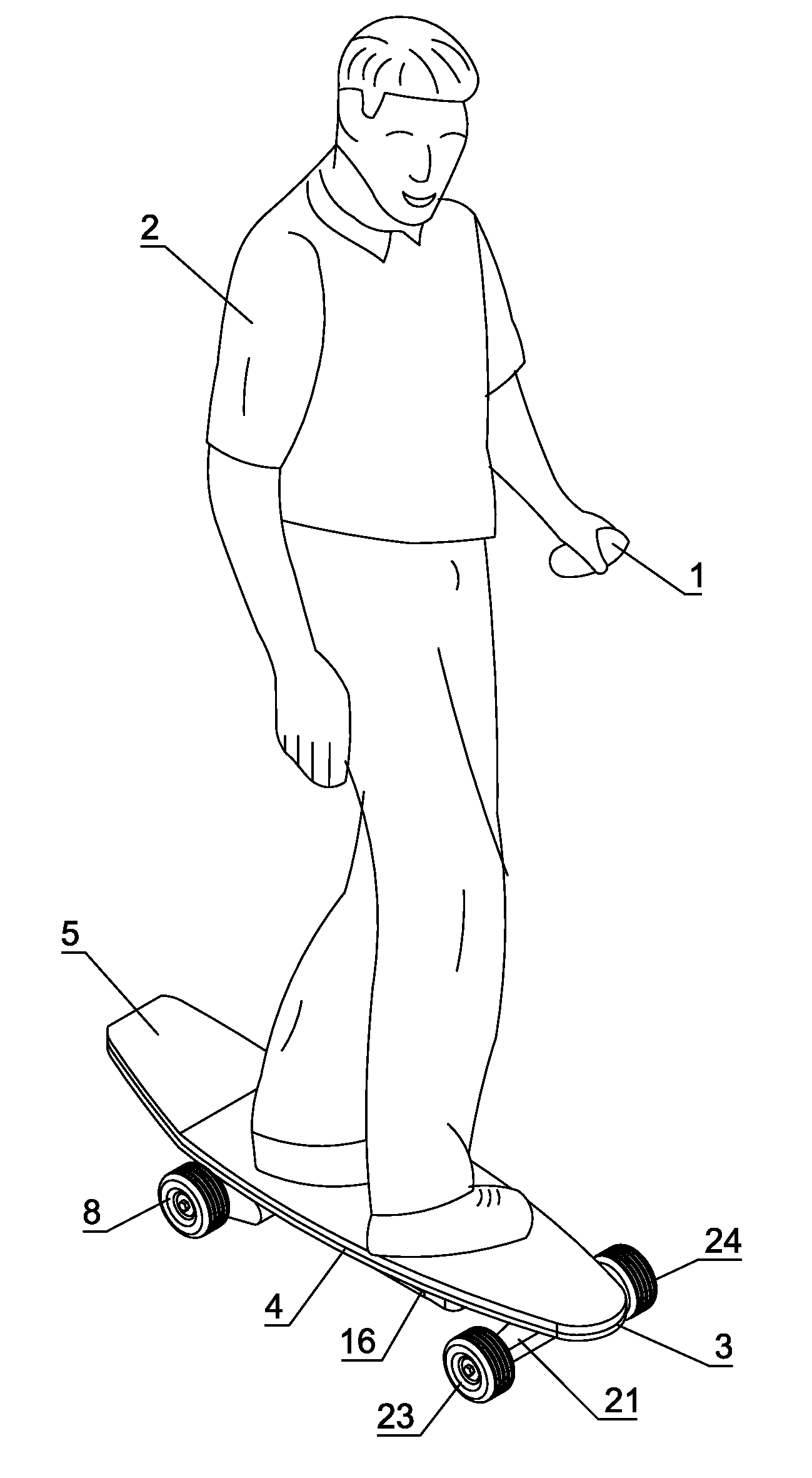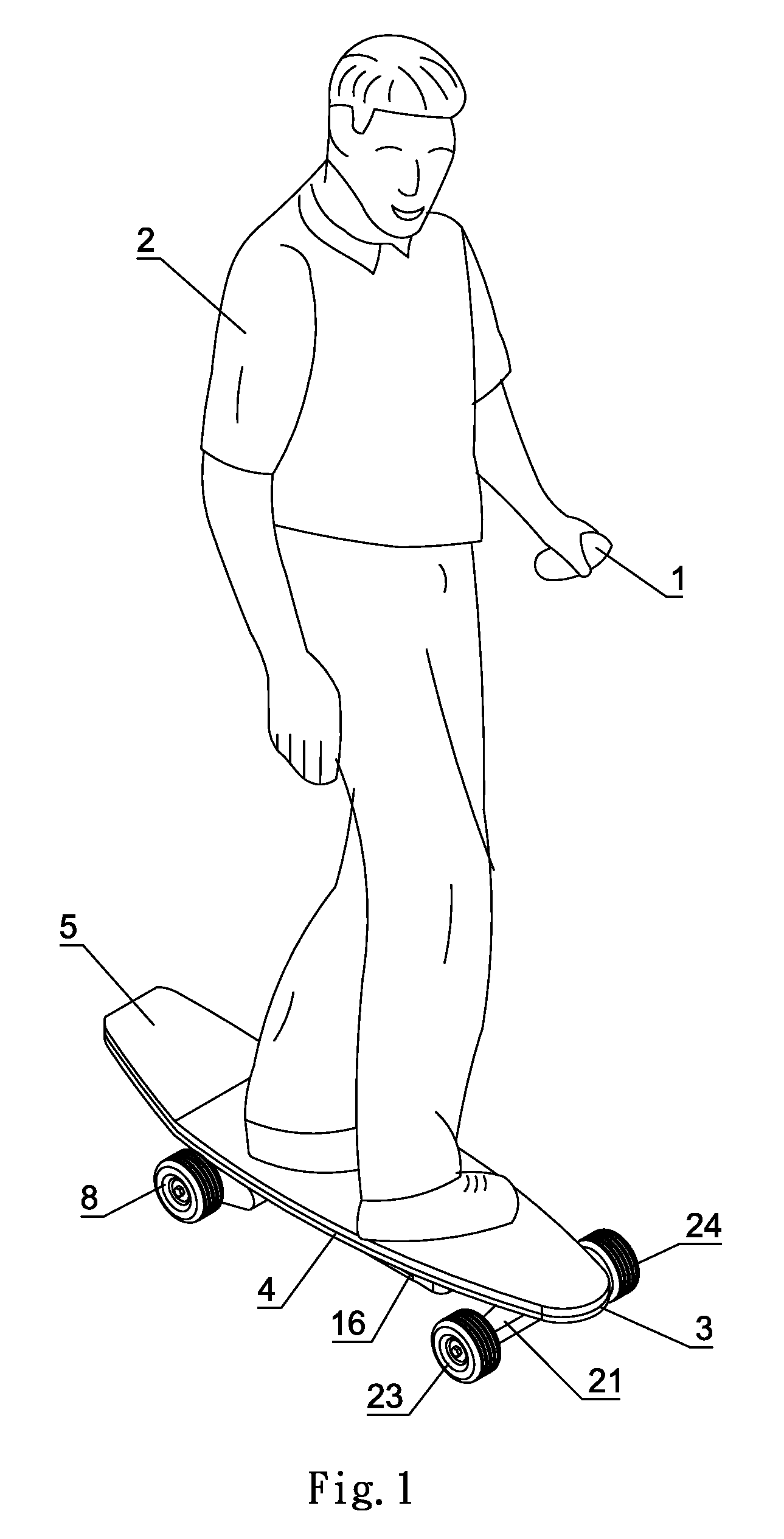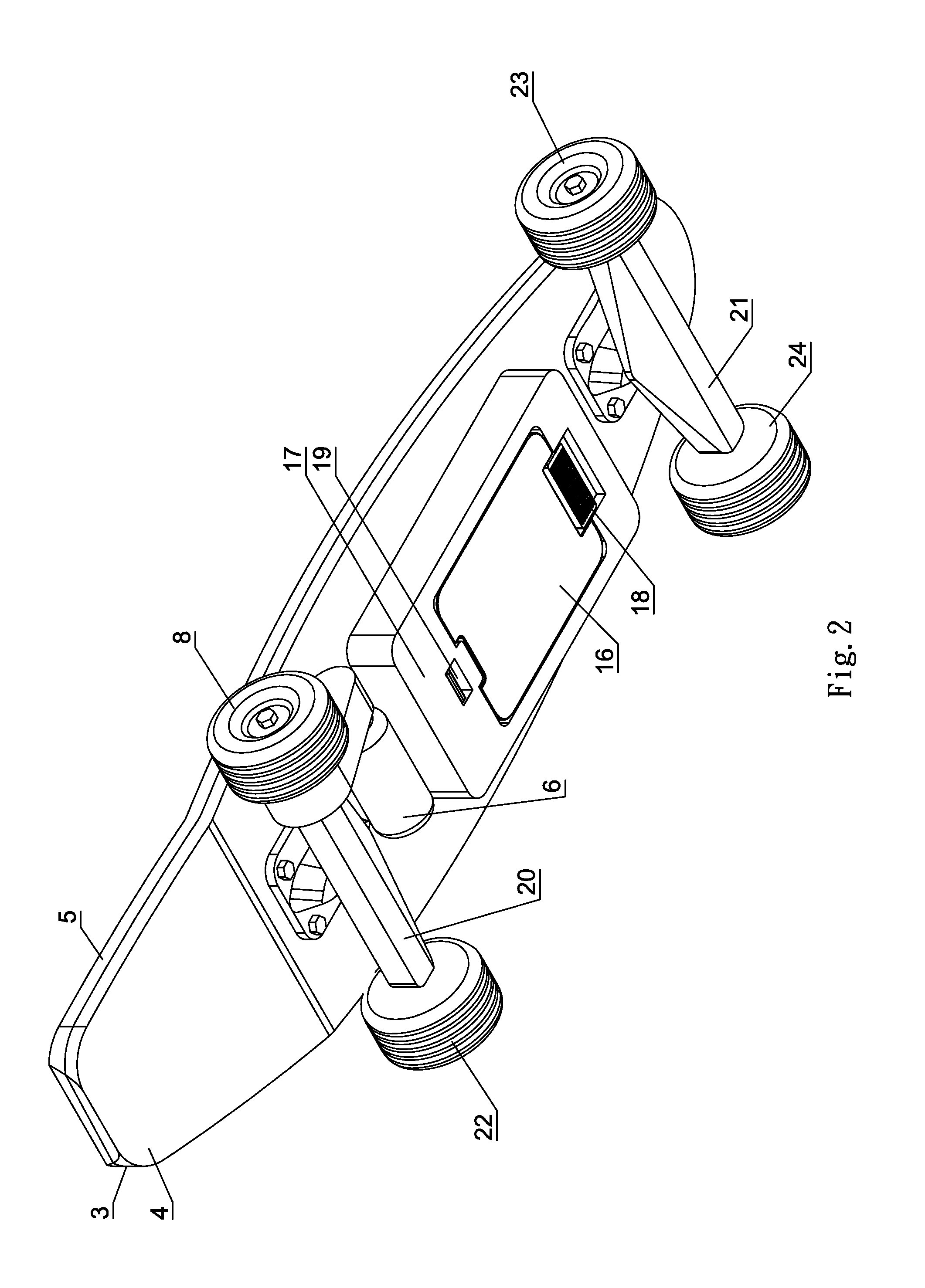Remote Control Electric Powered Skateboard
a remote control and electric power technology, applied in the direction of dynamo-electric converter control, motor/generator/converter stopper, instrument, etc., can solve the problems of reducing efficiency and shortening the use life of the battery, affecting the speed of the skateboard, and reducing the efficiency of the battery. , to achieve the effect of slowing down the speed, increasing the speed of the skateboard, and shortening the tim
- Summary
- Abstract
- Description
- Claims
- Application Information
AI Technical Summary
Benefits of technology
Problems solved by technology
Method used
Image
Examples
Embodiment Construction
[0028]FIG. 1 shows a first preferred embodiment of the present invention. A rider 2 with a remote control 1 stands on a skateboard (as shown in FIG. 2). More detailed structures could be illustrated in FIGS. 2 to 4. The skateboard comprises a regular plywood 3 disposed at an upper portion thereof. As it should be, the plywood 3 could be made of other materials, like a polymer filled with glass. Herein, the plywood 3 has an upper rider-support surface 5 and a lower surface 4 supporting a front support 21, a plurality of passive wheels 23, 24, a rear support 20, a active wheel 8, and a passive wheel 22. Also, a transmitting apparatus, namely, a brushless motor 6, a controller 17, and a battery box 16 with Li-ion battery are all included in the present invention.
[0029]Referring to FIGS. 2 and 7, the electric powered skateboard has a synchronizing wheel 61 installed on a rotor of the brushless motor 6. Herein, by means of a synchronizing tape 10, the active wheel 8 could be directly rot...
PUM
 Login to View More
Login to View More Abstract
Description
Claims
Application Information
 Login to View More
Login to View More - R&D
- Intellectual Property
- Life Sciences
- Materials
- Tech Scout
- Unparalleled Data Quality
- Higher Quality Content
- 60% Fewer Hallucinations
Browse by: Latest US Patents, China's latest patents, Technical Efficacy Thesaurus, Application Domain, Technology Topic, Popular Technical Reports.
© 2025 PatSnap. All rights reserved.Legal|Privacy policy|Modern Slavery Act Transparency Statement|Sitemap|About US| Contact US: help@patsnap.com



